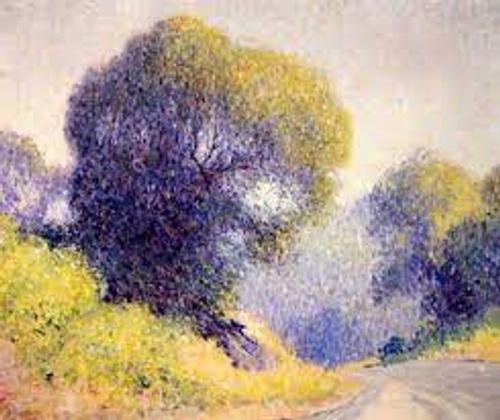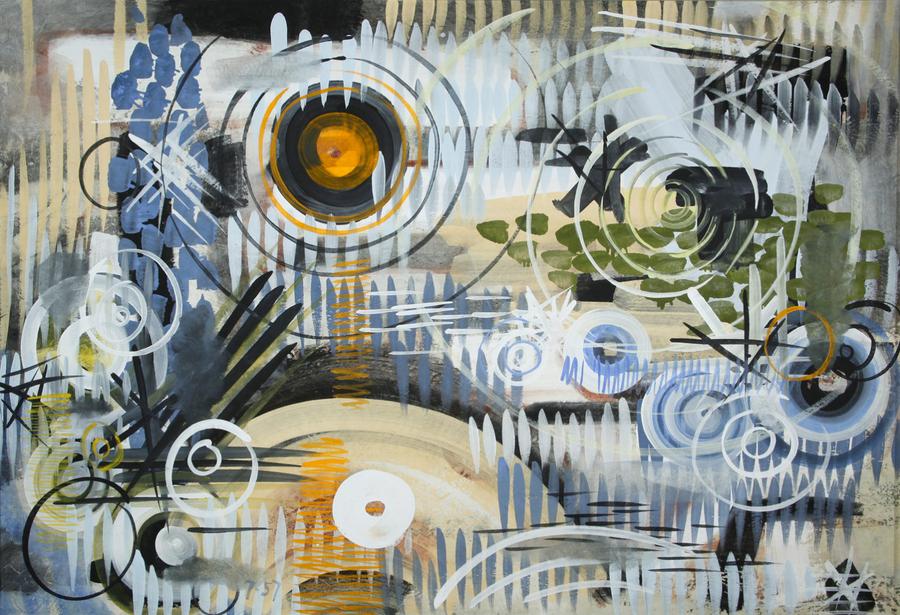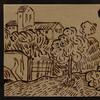The Resonant Surface: Movement, Image, and Sound in California Painting
- September 07, 2021 22:09

The Institute and Museum of California Art (IMCA) at the University of California, Irvine (UCI) will present its fall exhibition, The Resonant Surface: Movement, Image, and Sound in California Painting from September 11, 2021 through January 15, 2022 at IMCA’s interim museum location at 18881 Von Karman Avenue. Featuring 24 paintings and two films
spanning the early to mid-20th century, the exhibition invites viewers to experience the works beyond the immediacy of visual perception to discover musical landscapes, rhythmic abstractions, and sound and color experiments. The exhibition and related programs are free and open to the public.
The Resonant Surface considers these kinds of perceptual investigations from both the artists’ and viewers’ perspectives. Integrating works from IMCA’s The Irvine Museum and The Buck collections, Erin Stout, PhD, IMCA curatorial and research associate, organized the exhibition in four central themes with prompts to reveal connections and comparisons:
• Correspondences – Is it possible to see sound or hear color?
• Rhythm and Abstraction – How do line, shape, and color activate physical sensations of
movement, sound, and touch?
• Dynamism and Flux – What role does the imagination play in one’s perception of the
world?
• Visual Music – Can a painted surface convey acoustical elements and movement?

Stout said, “The Resonant Surface traces links across time, space, images, objects, and sensations—presenting the artworks as connective tissues for engaging with, and understanding, the world. It suggests that they can be experienced as interconnected surfaces that ‘resonate’ within and beyond the spaces they occupy, the times in which they were created, and the artists’ intentions.”
Correspondences
In this section, 11 paintings and a film by 10 artists explore interdisciplinary correlations between sound and vision or music and painting. The artworks convey a mood, emotional quality, or spiritual undertone—traits commonly associated with music. Tonalists like John Bond Francisco, Amédée Joullin, Xavier Martinez, Arthur F. Mathews, Gottardo Piazzoni, and
Calthea Vivian used subtle compositions of color and blurred forms in landscape paintings to create atmosphere, both literally and metaphorically. In Scrub Oak in a Canyon (c. 1910), Francisco—who was also an accomplished musician—depicts a stormy landscape evoking a natural soundscape with dark clouds suggesting thunder and vegetation rendered to
hint at rustling wind.
Visualizing expressive content through analogy or metaphor led artists of the period to consider how to paint all kinds of unseen phenomena. Some California painters were influenced by Theosophy, an esoteric belief that artists were highly sensitive to colors, shapes, and sounds imperceptible to others. Maurice Braun, Agnes Pelton, and Frederick John Schwankovsky integrated the theory into their practices. Pelton’s San Gorgonio in Spring (1932) conveys a metaphysical dimension through her distinctive use of color, light, and depth.

Rhythm and Abstraction
Grounded in scientific theories on how colors interact optically, techniques like Pointillism, the use of individual dots of pure paint to form an image, and Divisionism, which uses dashes of paint, rely on the viewer’s eye and mind to blend colors to see forms. Long after falling out of fashion in Europe in the late 19th century, California painters continued to experiment with these techniques.
Both William Henry Clapp and William A. Gaw used staccato brushstrokes and dots of pure pigment to construct rhythmic landscapes. When viewed at close range, Clapp’s Country Road (1943) dissolves from representation into abstraction. The same interactive, perceptual elements are present in plein air compositions by John M. Gamble and Alfred R. Mitchell for the same mid-20th century period.
Dynamism and Flux
In 1942, Knud Merrild began creating what he called “flux paintings” prefiguring Jackson Pollock’s drip paintings and Helen Frankenthaler’s color field paintings a few years later. Drizzling house paint onto a fluid surface and then tilting it to let colors interact and combine by both the artist’s hand and gravity, he generated spontaneous imagery. Merrild’s “automatic” or improvisational method signaled a wider tendency of modern California artists to embrace forces outside their control—like gravity—to produce unique results.
The Dynaton—Wolfgang Paalen, Gordon Onslow Ford, and Lee Mullican—showed their work together in the late 1940s in San Francisco, taking their name for the Greek word for “the possible.” The group’s objective was to visualize alternative realities by using improvisation to help liberate their imaginations. Ford’s interest in the natural world, the cosmos, and the spontaneous gesture is evident in Constellations and Grasses (1957); the combination of these elements results in a dynamic composition that seems to vibrate with energy that expands outward from the surface.
Visual Music
In the first half of the 20th century, some painters such as Oskar Fischinger began emulating musical structures in their work, hoping to evoke sensations in the same way music does: by directly acting on the senses rather than merely suggesting them with imagery. Stanton Macdonald-Wright and Morgan Russell were founders of the Synchromist movement that held that the sensations of time and motion could be conveyed using systematic color arrangements.
They used musical metaphor to illustrate their philosophy. Just as a symphony was made up of sounds, their paintings were composed with color for aural/visual effects.
A roster of public programs is planned. Visit imca.uci.edu for more information.




















